Russian Thistle
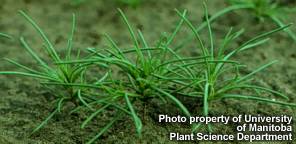 click to enlarge |
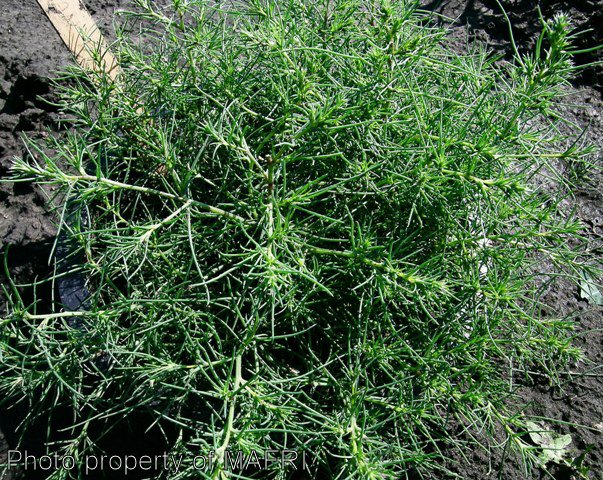 |
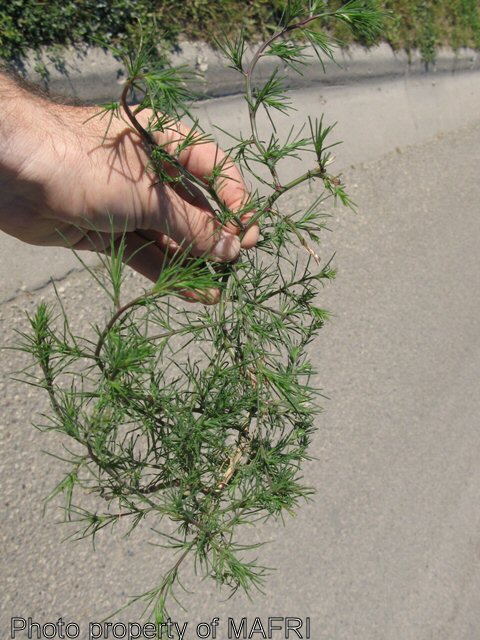 |
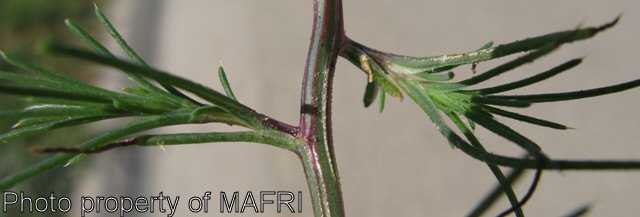 |
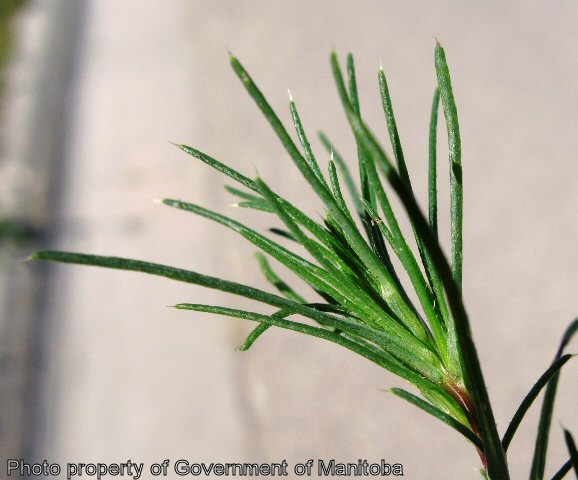 |
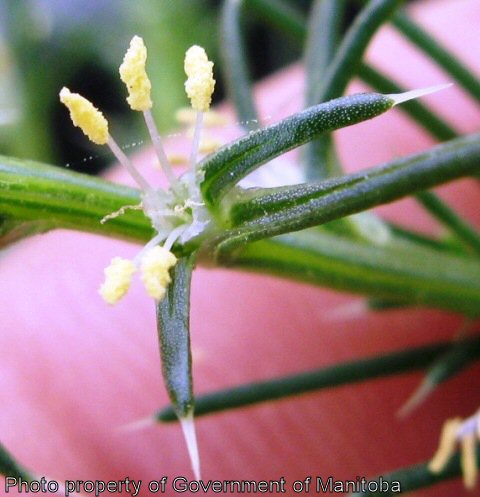 |
Biology
Russian thistle is an annual weed, reproducing by seeds. The stems are up to 1.2 m tall, red striped, and spread as much or more horizontally as vertically. The leaves are alternate, long, 2-5 cm, narrow, dark green, and fleshy. The later leaves are shorter, broader, and are tipped with stiff spines. The flowers are small, 2 mm wide, green or pinkish, inconspicuous, and occur in the axils of upper leaves. Two spiny-tipped bracts accompany each flower. The seeds are a cone shaped coiled utricle, 2 mm in diameter, dull brown to grey in colour.
Russian thistle can produce up to 200,000 seeds per plant. When mature it acts as a tumbleweed, rolling along with the wind spreading seeds as it travels. This weed is a high user of nitrogen and this can indirectly affect the growth of desirable plant species.
Scouting Techniques
Take a minimum of 20 weed counts across the field.
Effects On Crop Quality
Nitrates and soluble oxalates accumulate in the plants photosynthetic parts at levels poisonous to sheep.
Control Tips
- Group 22 herbicide application in non-crop areas
- mowing
- cultivation
- Groups 9 &10 in herbicide tolerant crops
